Monday 5 October
The dawn birdsong woke me early. I soon found I couldn't lie in bed, when the surrounds of our farmhouse beckoned me to explore them. I dressed as silently as possible, so as not to wake the others, and crept outside with my camera.
These are the lovely scenes that greeted me.
This is a collage of the purple ground orchid seen in the above photo.
I wonder if you can roughly spot where we had our sunset picnic. Yes, just above the treeline. Well done Jan for making it to the summit.
The majority of this trail had been devastated by the February bushfires, but rain in the month prior to our visit had excellerated regrowth. Nature's ability to regenerate is astounding.
Immediately below, was this delightful mauve bush.
Turning to the right of the vista, we had a rock scramble that led to this narrow chasm. Exiting the chasm, the views opened up to 180 degrees.
A friendly guest.
Before returning to the farmhouse, we completed the flat, short ciruit of the Granite Arch trail.

The early morning light was very special, illuminating leaves, spider webs and native flowers.
A pretty, but prickly wildflower.
The higher we ascended, the more prolific were the boulders.
There was much laughter as we passed this huge boulder.
The steep ascent begins.
First awesome vista.
After exiting the chasm, Joc and Marlene remained enjoying the view. The ledge that led to the summit was just too narrow for them. I fully understood.
There was a further rock scramble before the summit was achieved.
Whoopee, success for me, along with Jan.
From the summit.
Resting, before heading back through the chasm, to retrace our steps.
Truely amazing nature - native grass in a small hole, on the side of the solid granite.
The descent here was taken with due care.
Back at the carpark, we took time to enjoy the native plants surrounding the Information Centre, before walking down to the rocky bank of Bald Rock Creek, to find a shady spot for morning tea.
Top LHS - the 1992 visit to the Granite Arch with my two boys and a friend and her three children. Young or old, we all want to pose!

Driving back, we stopped at a small, garden cafe and craft shop. This King Parrot was enjoying the shade as he rested on a bird feeder.
The garden was full of colour and these eye catching cacti.
The day's activity is not complete. Lunch, a nap and a visit to a nearby winery were to follow and will be recorded in 'Girraween Part Four'.
A simple explanation of the geology of this area.
The granite of Girraween is just one small section of a great mass of rock. It was orginally a molten mass of magma, that rose up and pushed into older rocks surrounding it, about 240 million years ago. The magma resulted from the heat generated in the crust, when the eastern side of the continent was being compressed by two tectonic plates coming together. As it rose, the magma melted the surrounding rock and assimilated fragments of it into its mass. Some time after, further geological activity caused the land to rise creating the tableland. Erosion has removed vast quanties of the older rock [190 million years ago] and continues today, leaving the boulders we were totally in awe of.
I would love to read your comment.































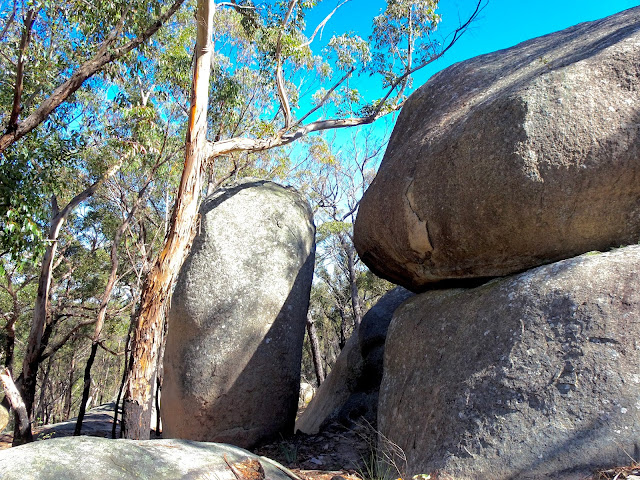











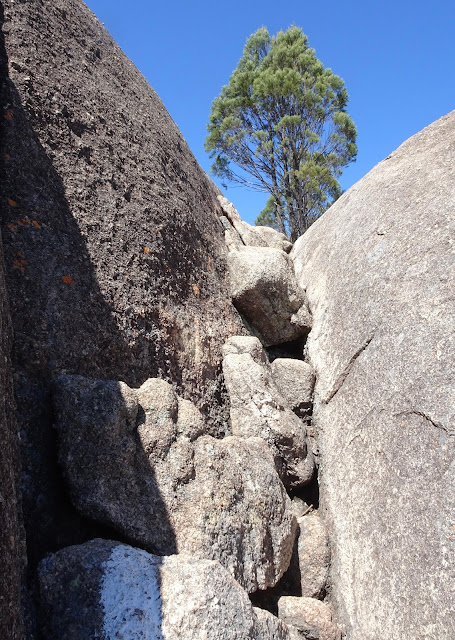

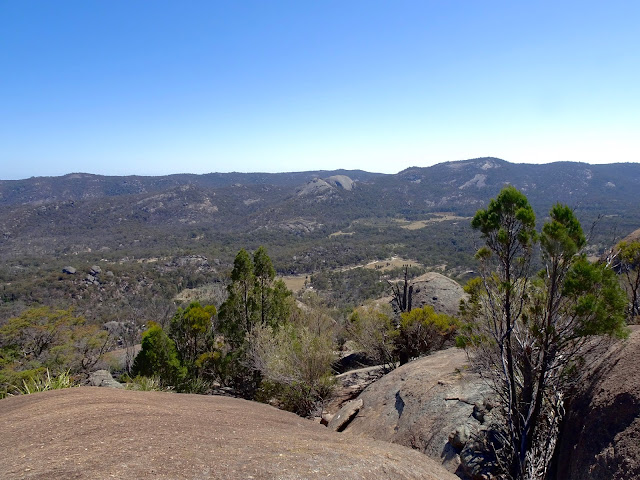

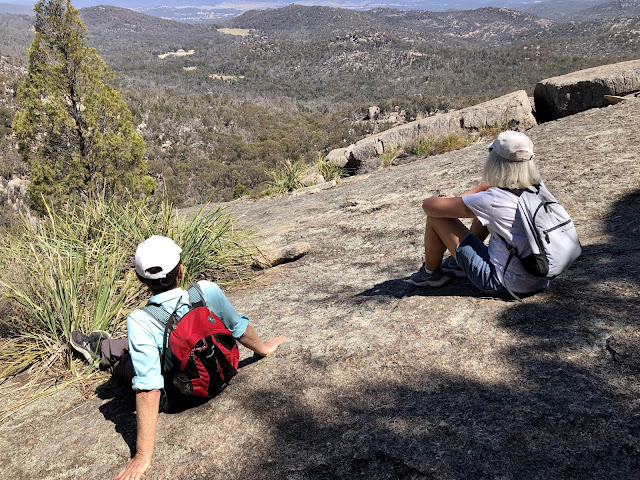





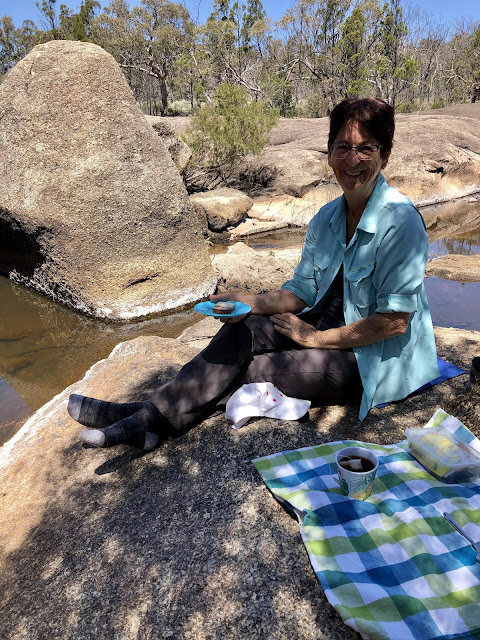








You are right--- The dry side's long eared deer really do look like 'roos when all you can see are their heads. This is a most interesting post. I love the big boulders!
ReplyDeleteThere were so many of them!
DeleteI love all the colorful wildflowers! And those large granite boulders are cool. It is amazing how fast nature can heal forests burned in wildfires.
ReplyDeleteI think our forests heal a little more quickly than yours.
DeleteIt was wonderful to see.
Gorgeous! My friends will not stay with me in cabins, but I think your country is doing much better than ours.
ReplyDeleteMary, my country is definitely doing it better than yours! Of a population of 25 million, there have only been 28,000 cases and 900 deaths. Sadly, many of these were in nursing homes, before emergency plans were enacted. Today we only have 170 active cases in the whole of Australia, with only 32 in hospital.
DeleteYou had me at the birdsong in the morning. The reflections on the water are gorgeous. The photos are wonderful. They take me there with you. I don’t know if I could persevere in the heat. Thank you for the description of the rock formation too.
ReplyDeleteMarie our birds are many and varied and constantly singing throughout the day. At dawn they join to perform a wonderful symphony to welcome the day.
DeleteWonderful scenes!
ReplyDeleteA contrast to your magical snowy ones!
DeleteThose boulders are impressive. I love all the wildflowers you found along the way.
ReplyDeleteI forgot to mention the kangaroos. They are impressive to this American, though I realize they can be a nuisance just like deer are in our part of the world.
ReplyDeleteKim, most Aussies get excited at the sight of one. Sadly their numbers in the west can reach plague proportions. Very difficult for the farmers. I've just read that the kangaroo is the most abundant mammal in the world. Australia has a human population of 25 million but 50 million kangaroos. I'm amazed.
ReplyDeleteThose boulders are amazing. Good for you and Jan - that looks like hard climbing. You were rewarded by amazing views. I'm an early riser, too, so I would have been out snapping with you. Yes, watch your step!
ReplyDelete